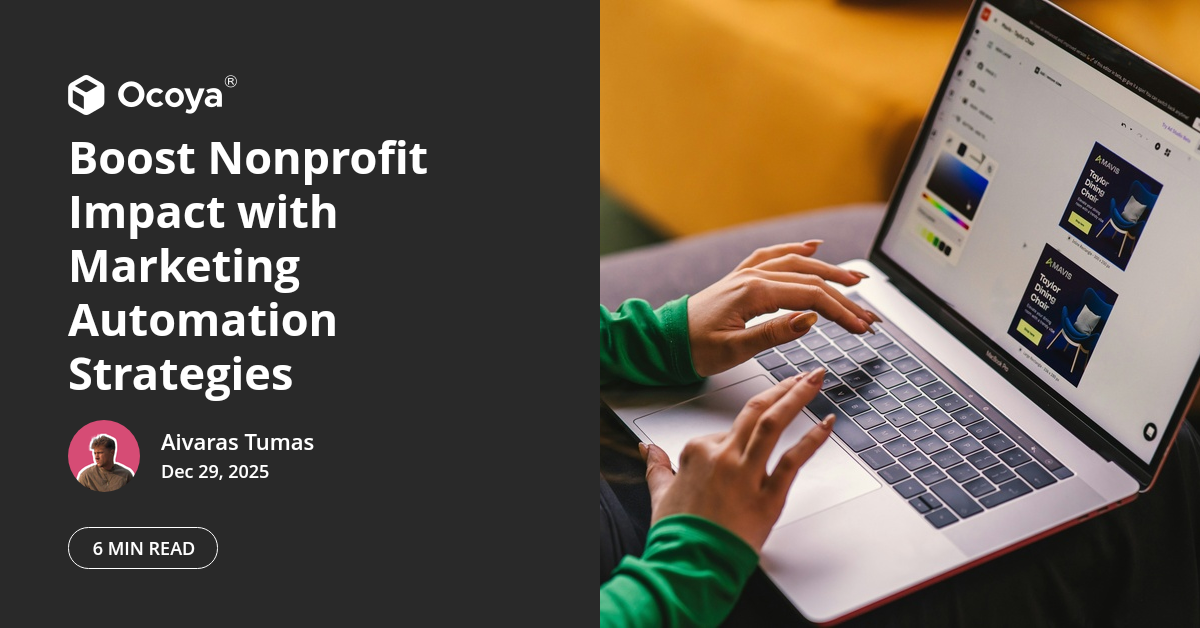
October 31, 2025
Marketing
Launch Your Digital Product Business: Expert Tips for Success

Starting a digital product business can seem like a daunting task, but with the right strategies and tools, it can be a highly rewarding venture. Whether you plan to sell ebooks, software, online courses, or digital art, the steps to build a successful digital product business are primarily the same.
Here, we will delve into the critical aspects of how to start a digital product business. We will cover everything from ideation, market research, and product development to marketing and scaling your business for long-term success.
Understanding the Digital Product Landscape
Digital products are intangible assets that can be sold or traded online. These include a wide range of offerings such as software, eBooks, online courses, digital art, and more. The advantage of digital products is that they can be distributed and reproduced easily without the logistics involved in physical goods. Moreover, the scalability and global reach of digital products make them an appealing choice for entrepreneurs.
To successfully navigate this landscape, it’s essential to understand the various types of digital products available:
eBooks and Online Courses
eBooks are straightforward to create and distribute. Similarly, online courses have gained massive traction due to the e-learning boom. Platforms like Udemy and Coursera have paved the way for educational content creators. The key is identifying a niche where you can offer valuable insights or skills.
Software and Applications
Software as a Service (SaaS) has revolutionized the way businesses operate. Cloud computing and mobile applications offer endless opportunities for innovative solutions. For example, creating a task management tool or a budgeting app can cater to a specific audience's needs.
Such tools must also be reliable, as users expect smooth performance without interruptions. Ensuring this level of quality often requires rigorous checks, and using an ai testing tool helps identify issues before they reach the end user. With the growing complexity of cloud-based systems, this step has become as important as the design itself. As a result, businesses can launch applications with greater confidence and stability.
Creative Assets
Digital art, stock photos, templates, and music are also high-demand digital products. Marketplaces like Etsy, Shutterstock, and AudioJungle help artists and creators sell their works to a global audience.
Identifying Your Niche
The first step in how to start a digital product business is identifying your niche. A niche is a specialized segment of the market for your product or service. This involves understanding your interests, strengths, and the market demand.
Self-Assessment
Begin with a self-assessment to determine what skills and knowledge you have that can be monetized. Reflect on your past experiences, hobbies, and passions. If you're a software developer, perhaps creating a productivity app is within your realm of expertise. If you’re a graphic designer, you might want to develop digital art templates.
Market Research
Performing thorough market research is crucial. Utilize tools like Google Trends, SEMrush, and social media analytics to identify trending topics and gaps in the market. Analyze competitors to understand what they're offering and identify areas where you can provide a unique value proposition.
Defining Your Target Audience
Understanding who your target audience is will influence all aspects of your business, from product development to marketing strategies. Create detailed buyer personas to identify the demographics, preferences, behavior, and pain points of your ideal customers.
Validating Your Idea
Before you invest time and resources in developing your digital product, it’s essential to validate your idea. This step ensures there is a market demand for your product and saves you from potential failure.
Surveys and Feedback
Conduct surveys and seek feedback from potential customers. Use platforms like SurveyMonkey or Typeform to gather data. Engage in forums, social media groups, and communities related to your niche to get insights and opinions.
Minimum Viable Product (MVP)
Creating a Minimum Viable Product (MVP) is an effective way to test your idea. An MVP is a simplified version of your product that includes just enough features to be usable by early adopters. Gather feedback from your MVP to make necessary adjustments and improvements.
Pre-Selling
Another method to validate your idea is pre-selling the product. Create a landing page with detailed information about your product and use email marketing campaigns to gauge interest. If the pre-sales are positive, it indicates a viable market for your product.
Developing Your Digital Product
Once you have validated your idea, the next step is product development. This phase involves designing, creating, and refining your digital product. Here’s how to ensure a smooth development process:
Planning
Create a comprehensive plan outlining all aspects of your product development. This includes defining the scope, setting timelines, assigning roles (if you have a team), and specifying the resources required.
Design and Creation
Focus on creating a high-quality product that offers real value to your customers. If you're not proficient in certain tasks, consider outsourcing or collaborating with experts. Use user-friendly design principles and ensure your product is accessible across different devices and platforms.
Testing and Quality Assurance
Testing is a crucial phase in product development. Conduct thorough testing to identify and rectify any issues or bugs. Use beta testers to get external feedback and ensure your product meets the highest quality standards.
Pricing and Monetization Strategies
Determining the right pricing and monetization strategy is crucial for the success of your digital product business. Several factors influence pricing decisions, including production costs, market demand, competition, and perceived value.
Cost-Based Pricing
Cost-based pricing involves calculating the total cost of creating your product and adding a markup percentage to determine the selling price. This ensures you cover your costs and achieve a profit margin.
Value-Based Pricing
Value-based pricing focuses on the perceived value of your product to the customer. This approach considers how much customers are willing to pay based on the unique benefits and solutions your product provides.
Freemium Models
The freemium model, commonly used in software and app industries, offers a basic version of the product for free while charging for additional features and premium versions. This strategy helps attract a larger user base and convert free users into paying customers.
Building an Online Presence
Having a strong online presence is essential for reaching your target audience and establishing credibility. Here’s how to build and optimize your online presence:
Creating a Website
Your website is the hub of your digital product business. Ensure it is well-designed, user-friendly, and optimized for search engines (SEO). Include essential elements such as product information, pricing, testimonials, and a blog.
Content Marketing
Develop a content marketing strategy to attract and engage your audience. Create valuable and relevant content such as blog posts, videos, infographics, and podcasts that address your audience’s pain points and interests.
Social Media Marketing
Leverage social media platforms to promote your digital products and connect with your audience. Each platform has its unique features and user base, so tailor your content and approach accordingly. Utilize paid advertising to reach a broader audience and drive traffic to your website.
Launching Your Digital Product
Launching your digital product effectively can make a significant difference in its initial success. Here’s how to ensure a successful launch:
Pre-Launch Campaign
Generate buzz and excitement about your product before the official launch. Use teaser campaigns, countdowns, and behind-the-scenes content to create anticipation. Build an email list by offering incentives such as free resources or early access.
Influencer Partnerships
Collaborate with influencers in your niche to promote your product. Influencers already have a dedicated following, and their endorsement can add credibility and expand your reach.
Launch Events and Webinars
Host virtual launch events and webinars to showcase your product's features and benefits. Engage your audience with live demonstrations, Q&A sessions, and special offers for attendees.
Sales Funnels
Implement a sales funnel to guide your audience through the buying journey. Use lead magnets, email sequences, and persuasive landing pages to convert visitors into customers.
Marketing and Sales Strategies
Ongoing marketing and sales efforts are essential to maintain momentum and drive continuous growth. Here are key strategies to consider:
Email Marketing
Email marketing is a powerful tool for nurturing leads and maintaining customer relationships. Build an email list and send regular newsletters, promotional offers, and personalized recommendations.
Affiliate Marketing
Leverage affiliate marketing by partnering with affiliates who promote your products in exchange for a commission. This expands your reach and increases sales without upfront costs.
Search Engine Optimization (SEO)
Optimize your website and content for search engines to improve visibility and attract organic traffic. Focus on relevant keywords, quality backlinks, and on-page SEO elements such as meta tags and alt texts.
Analytics and Continuous Improvement
Track and analyze your marketing efforts to identify what's working and what needs improvement. Use tools like Google Analytics to monitor website traffic, user behavior, and conversion rates. Continuously refine your strategies based on data insights to achieve better results.
Scaling Your Digital Product Business
Once you have a stable foundation, it's time to scale your digital product business. Expanding your reach and offerings can significantly increase revenue and profitability. Here’s how to scale effectively:
Expanding Your Product Line
Diversify your product portfolio by creating complementary products or introducing new ones. This can attract a broader audience and increase customer lifetime value.
Entering New Markets
Explore new markets and demographics to expand your customer base. Consider translating your products into different languages or tailoring them to specific cultural preferences.
Hiring and Outsourcing
As your business grows, you may need to hire additional team members or outsource tasks to freelancers and agencies. This allows you to focus on high-level strategies and innovation while ensuring operational efficiency.
Automation and Efficiency
Utilize automation tools to streamline repetitive tasks and improve productivity. Marketing automation, for example, can save time and ensure consistent communication with your audience.
The Role of Ocoya in Your Digital Product Business
As you navigate the complexities of how to start a digital product business, leveraging the right tools can make a significant difference. Ocoya is a comprehensive tool designed to streamline your social media marketing efforts with AI. It offers an array of capabilities such as automated content creation, scheduling posts across multiple social media platforms, and providing detailed analytics to track performance.
With Ocoya, you can efficiently manage your social media campaigns, ensuring that your content reaches the right audience at the optimal time. This tool can help you enhance your online presence, engage more effectively with your audience, and drive traffic to your digital products.
Sign up for a free trial of Ocoya and take your digital product business to the next level!
Key Takeaways
Embarking on the journey of starting a digital product business is both challenging and exciting. By following these expert tips and leveraging tools like Ocoya, you can set yourself up for success and achieve your entrepreneurial dreams.

Continue Reading
The latest handpicked blog articles.



.svg)

.svg)







